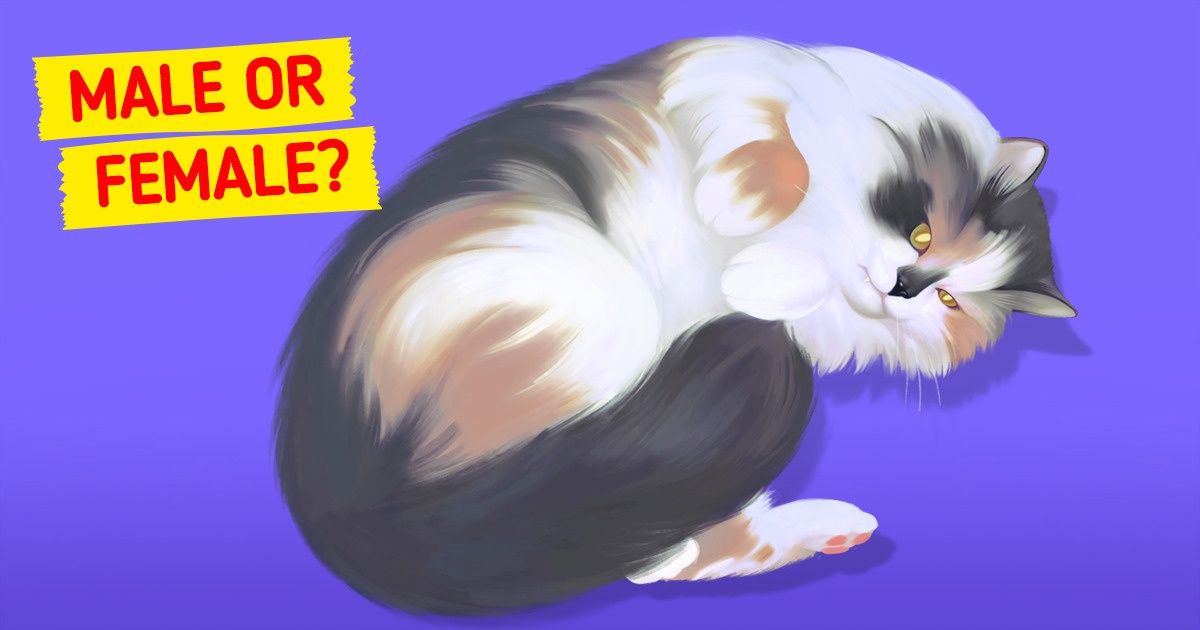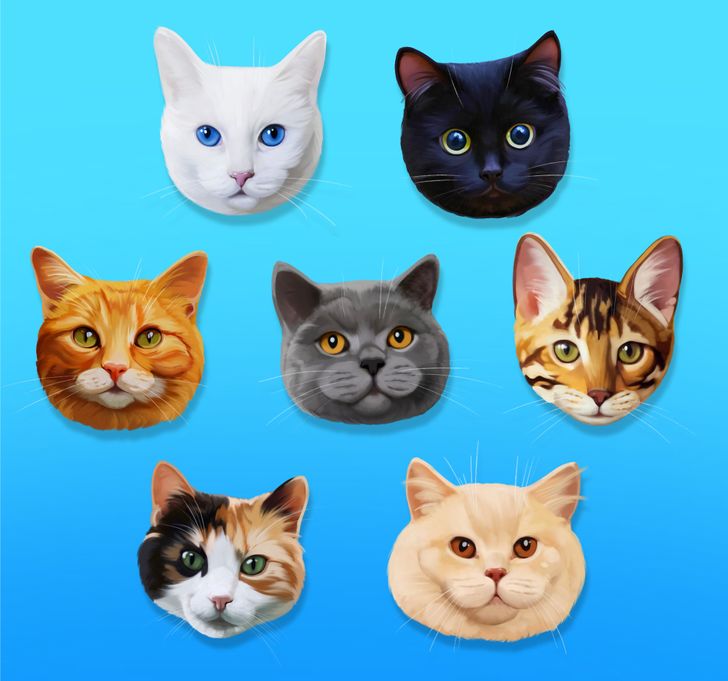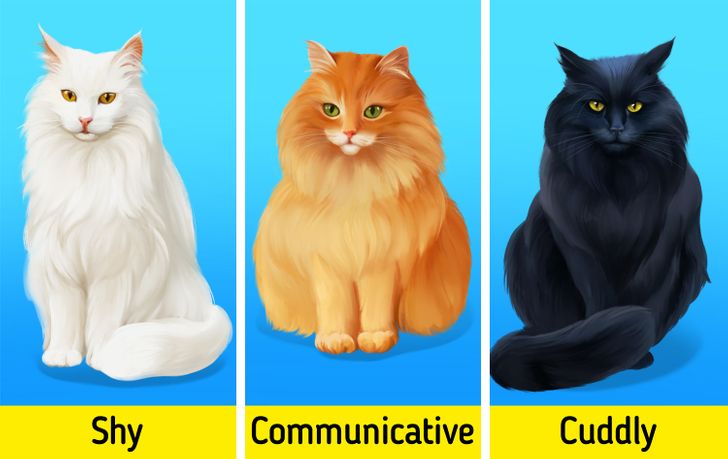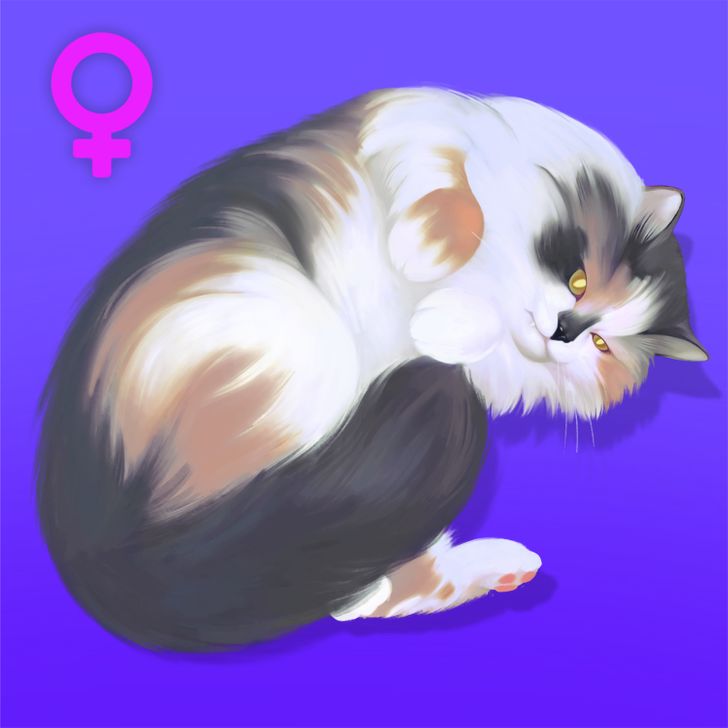What the Coat Color of Your Cat Can Tell You

Have you ever wondered if there was a connection between the color of your cat and its behavior? It seems impossible, but, in fact, there is a connection and we’ll tell you about it in this article.
Together with 5-Minute Crafts, you will find out more about the temperament of cats depending on their color.
Kinds of colors and patterns on cat fur
The depth of the colors and patterns of fur depends on the genes that participated in the formation of the cat. For example, all the shades from black to brown are the products of a dominant gene. There are an array of different coat colors:
- White: This is the only color without any markings at all.
- Black: Black cats sometimes have other colors. In sunlight, you can see a rusty shade.
- Ginger (red): The gene for the red color is sex-linked, which is why ginger cats are usually male.
- Blue: This is a diluted version of black, and it’s actually dark blue-gray.
- Cream: It’s a diluted version of red.

- Bi-color: This is the kind of coat a cat has when their fur has one main color (not light) with white patches. It might look like a tuxedo when a cat is mostly black with a bit of white on the chest or a van — a white cat with a colored top of the head and tail.
- Tabby: This is the pattern determined by the gene that can give 4 kinds of patterns — mackerel, classic, spotted, and ticked. Tabbies can also be a part of another basic coat pattern such as calico or tortoiseshell.
- Mackerel tabby: Characterized with vertical stripes on the sides. The narrow lines can be continuous or broken.
- Classic tabby, also called marbled: There’s a butterfly button on the shoulders and 3 thin stripes on the spine.
- Ticked tabby: Such cats seem solid but they have marks on the paws, tail, and face.
- Spotted tabbies: They have stripes broken into smaller and bigger spots. This pattern is often observed among Bengal, Serengeti, Egyptian Mau, Arabian Mau, Maine Coon, and other breeds.
- Tortoiseshell and calico (or tri-color): This is a color with red and black spots and their diluted forms are cream and gray. Such cats might also have white spots. The cats that have a lot of white are tri-color or calico. Tortoiseshell cats have red and black spots that look like patchwork.
- Colorpoint: Such cats have dark pigmentation on the face, ears, legs, and tails, and lighter colors on the rest of the body. Siamese cats are most commonly associated with this coat pattern, but many other domestic cats can also be colorpoint.
- Silver pattern: The silver coat pattern is the pattern in which only the tips of the hair are actually colored. The gene responsible for this pattern makes solid cats duller and striped cats shinier.
Does the color of the fur affect your cat’s personality?
Every house cat has a unique personality. Its individuality is formed thanks to different factors, including gender, hormonal factors, family, and even the process of socialization. But what about the fur color? It’s not all that simple. Scientists can’t give a definite answer, but they are trying to find it.
Scientists from the University of California conducted a study among cat owners and asked them to estimate the level of aggression their pets display at home and during their vet visits. According to the results of the survey, the most aggressive cats were white-gray, black and white, or ginger, and also tri-colored ones. The least aggressive cats were black, white, gray, and striped. But it’s too early to make any serious conclusions because the studies conducted a little earlier concluded that ginger cats were very friendly and communicative. And another study shows that black cats are better at living in small spaces than those with stripes.

A study of 84 British Shorthair kittens revealed that ginger, cream, or tortoiseshell kittens try to escape when they see unfamiliar people, unlike cats of other colors.
But other scientists from the University of California, Berkeley discovered that: “Overall, orange cats and bi-colored cats were characterized as friendly, while black cats, white cats, and tri-colored cats were regarded as more antisocial. White cats were considered to be more shy, lazy, and calm, while tortoiseshell cats were more likely to be depicted as both more intolerant and more trainable. Black cats were typified as having less extreme character traits, which might contribute to their mysterious reputation.”
You are free to make your own conclusion, but there is a chance that there is some connection between the color of the cat and its personality. Maybe in the future experts will find a more definite answer.
Bonus: why male cats are almost never tri-colored

Tortoiseshell and calico cats are almost always female. The reason is that the pattern of such colors is the result of the differential inactivation of the X-chromosome, and male cats have only 1 copy of the X-chromosome, so the inactivation doesn’t happen. Female cats have 2 copies of the X-chromosome. So male cats are either completely ginger or completely not ginger. The rare cases when male cats are tortoiseshell color are the result of an extra X-chromosome (XXY) or the fact that such cats are chimeras.